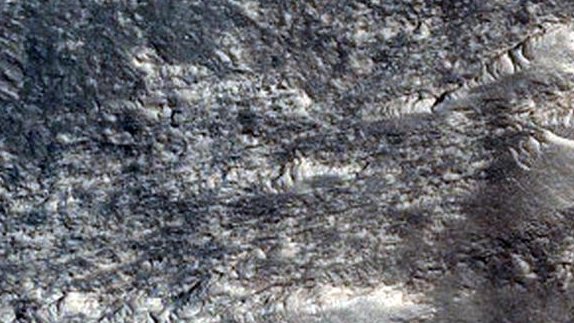1 of 3 | Reconnaissance Orbiter shows the equatorial plains region known as Elysium Planitia on Mars. Using a radar instrument aboard the spacecraft, scientists made a 3-D map of flood channels below the surface of Mars, apparently created by past flooding. The findings were reported online, March 7, in the journal Science. CREDIT: NASA
NASA's Mars Reconnaissance Orbiter has found evidence that the red planet underwent a flood of biblical proportions billions of years ago.
New maps of the subsurface of Mars have shown buried channels below the red planet's surface. The new findings have dismissed the belief that Mars was cold and dry over the past 2.5 billion years, with the channels providing evidence of flooding, NASA reported Thursday.
The spacecraft took several images over the past few years that have allowed scientists to create a 3-D illustration of the detected flood channels.
According to NASA, Martian floods were comparable to Earth's ancient mega-flood that created the Channeled Scablands in the Pacific Northwest region of the United States, in eastern Washington.
"Our findings show the scale of erosion that created the channels previously was underestimated and the channel depth was at least twice that of previous approximations," said Gareth Morgan, a geologist at the National Air and Space Museum's Center for Earth and Planetary Studies in Washington and lead author on the paper. "This work demonstrates the importance of orbital sounding radar in understanding how water has shaped the surface of Mars."
Mars' channels lie in Elysium Planitia, an expanse of plains along the Martian equator and the youngest volcanic region on the planet. According to NASA, the region's extensive volcanism throughout the past several hundred million years covered most of the surface of Elysium Planitia, blurring Mars' geologic history.
For the entire story on Mars' buried flood channels visit NASA's Jet Propulsion Laboratory website.









